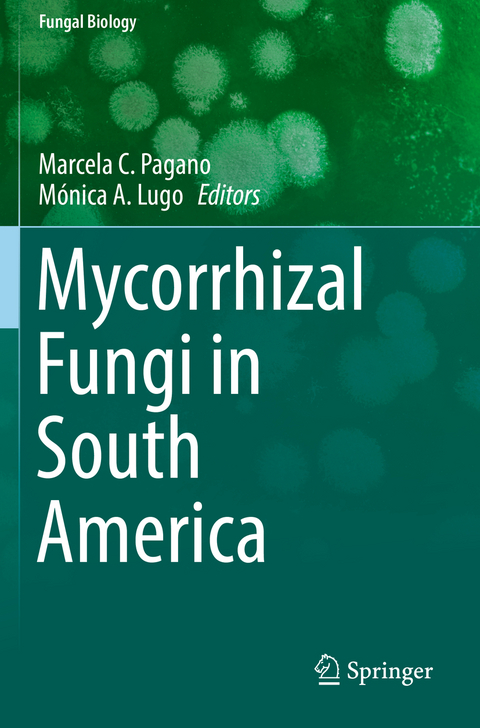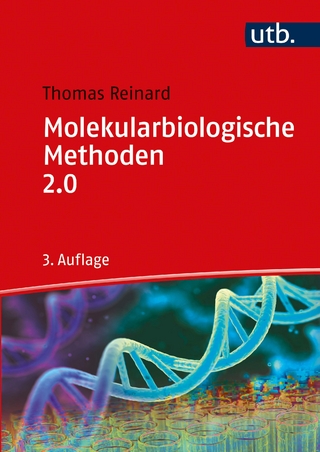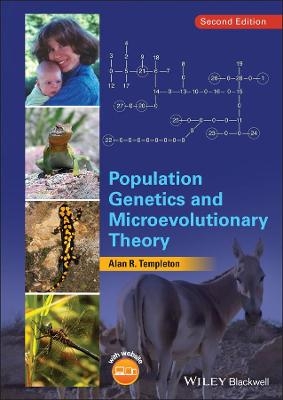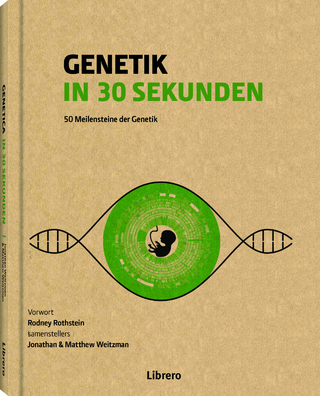
Mycorrhizal Fungi in South America
Springer International Publishing (Verlag)
978-3-030-15230-7 (ISBN)
lt;b>Dr. Marcela Claudia PaganoMarcela Pagano was born in La Plata, Argentina. She taught for some years at high school and Universities. In 2018 she was appointed as Technical analyst in Health Promotion and Management at Sanitary Surveillance Board, Santa Catarina, Brazil. Prior to that, she spent over 10 years in mycorrhizal research, completing her PhD at the Federal University of Minas Gerais, Brazil and four postdoctoral fellowships.Education: Dr. Pagano completed her D.Sc. (Sciences - Applied Botany) and her MSc in Ecology, Conservation and Wild Life Management from Federal University of Minas Gerais, Brazil.Experience: She has vast experience in different areas of plant-soil-fungal biology, to name a few: Rhizobial and mycorrhizal symbiosis, Nanomaterials focusing on anthropogenic soils and biochar, terrestrial ecology, etc.Publication: Since 1998, 28 papers published in national and international peer reviewed journals like Ecological Indicators, Applied Soil Ecology, Symbiosis, Soil & Tillage Research, etc. and from different journals of Elsevier, Springer, etc.International collaboration: Dr. Pagano also collaborate in research projects in Brazil and with other research groups, which has resulted in 27 book chapters and 2 edited books.Editorial Experience: She is editorial board member of three International Journals (European Journal of Soil Biology, Frontiers in Microbiology).Specialization Keywords: Plant-soil interactions /soil ecology, mycorrhizal fungi, plant symbiosis, Nanomaterials
Prof. Dr. Mónica Alejandra Lugo MICODIF- IMIBIO-CONICET-UNSL- Facultad de Química, Bioquímica y Farmacia, 5700, San Luis, Argentina. e-mail lugo@unsl.edu.ar/monicalugo63@gmail.comML was born in Tigre, Argentina. She taught for 28 years at high school and Universities such as National University of Buenos Aires, National University of Córdoba and National University of San Luis; and her current positions are Adjunct professor (Biology Department, FQByF, National University of San Luis) to Bachelor of Biological Sciences and to Professor in Biological Sciences, becoming Professor of Vegetal Diversity I, Plant-Fungi interactions: Mycophyllas and Mycorrhizas, Biology of Protist and Fungi and Fungi and Vegetal Systematic. She won three Doctoral Scholarships (1994-1999) and a Postdoc Fellowship (1999-2001). Further, she is the Director of the Mycology, Diversity and Fungi interaction Herbarium (MICODIF) of the National University of San Luis-SNDB (National System of Biological Data-Argentina).Education: Dr. Lugo completed her D.Sc. (Biological Sciences) from National University of Córdoba, Argentina.Experience: She has worked in diverse research topics such as: Plan-Fungi associations (stem fungal endophytes/mycophyllas, arbuscular mycorrhizas and dark septate endophytes, ectomycorrhizas ecology), Environmental Microbiology (plants and soil microorganisms interactions in highlands, stressed, arid and semi-arid native and agronomic ecosystems, secondary communities), Mycology, fungal diversity, etc.Publication: Since 1995, 24 papers published in national and international peer reviewed journals like Microbial Ecology, Mycologia, Symbiosis, Mycorrhiza, Pedobiologia, Journal of Arid Environments, etc., published also 3 Book Chapters, 1 Book of Research Methodologies, 2 Didactic Books from different editorial such as NOVA Science Publishers, Springer, etc.International collaboration: Dr. Lugo also collaborate in research projects in Argentina, Colombia, Italy and with other research groups.Editorial Experience: She has reviewed research works as expert reviewer of International Journals (Applied Soil Ecology, Fungal Ecology, Microbial Ecology, Mycorrhiza, Symbiosis, etc.) and National Journals.Specialization Keywords: Plant-soil
Preface.- Overview of the Mycorrhizal Fungi in South America.- Mycorrhizal types in native and exotic woody species in Southern South America.- Arbuscular Mycorrhizal Fungi in South America.- Ectomycorrhizal Southeamerican Fungi.- North vs South Hemisphere.- Northern Tropical South America.- Tropical and Subtropical rain forest, Grand Chaco region.- Great Savannah.- Tropical Dry Forest compared to Rainforest.- Yunga.- Caatinga, Cerrado, and Central Sabanas.- Chaco region.- Arid Southern Highlands.- Tabaquillo (Polylepis australis Bitter) Mountain Forest.- Dry forest and open woodlands.- Salares and Deserts.- South American temperate region.- South American anthropic environments.- Arbuscular mycorrhizal fungi in volcanic soils.- Patagonian steppe.- The native broadleaf and conifer Andean-Patagonic forest.- Below ground Invasions in South America.- Index.-
| Erscheinungsdatum | 12.07.2020 |
|---|---|
| Reihe/Serie | Fungal Biology |
| Zusatzinfo | X, 374 p. 66 illus., 51 illus. in color. |
| Verlagsort | Cham |
| Sprache | englisch |
| Maße | 155 x 235 mm |
| Gewicht | 587 g |
| Themenwelt | Naturwissenschaften ► Biologie ► Genetik / Molekularbiologie |
| Naturwissenschaften ► Biologie ► Mikrobiologie / Immunologie | |
| Naturwissenschaften ► Biologie ► Mykologie | |
| Schlagworte | Anthropogenic Impacts • fungal biology • Mycorrhizal ecology • natural ecosystems • plant symbioses • South America • systematic botany |
| ISBN-10 | 3-030-15230-8 / 3030152308 |
| ISBN-13 | 978-3-030-15230-7 / 9783030152307 |
| Zustand | Neuware |
| Informationen gemäß Produktsicherheitsverordnung (GPSR) | |
| Haben Sie eine Frage zum Produkt? |
aus dem Bereich


